Writing (not Falling) In Reverse! In this lesson we’re going to look at some ways to add rhythms to a lead guitar part when the lead part was written first. We’ll use a lick that we’ve previously written in B phrygian to demonstrate and find inspiration to how this can work.
Most commonly you would write a rhythm track and song structure before exploring how melodies and solos can work over the given chords. Understanding how to reverse engineer these ideas will not only help writing a guitar solo, but it will help your guitar playing in many other ways too. If you can master this you’ll be a versatile band musician as well. If you’re anything like us you’ll always find times where you’ve written an incredible lead lick, solo or melody that then needs backing music to support it! Let’s get into it!
Writing A Guitar Solo: The Lead
This lick was originally intended to be an exercise rather than part of a song. It could work well as a solo or as a bridge that builds up to the next section of music. It is based on the Phrygian mode in B.
It is made up of notes of equal length. If you wrote a whole song like this it would likely get boring after a while. As long as there are other dynamics present you can incorporate sections like this and still keep things interesting. Sometimes you may even want a long “relentless” picking run in order to give the feeling of a flow of energy or to convey a sense of being driven to achieve something. This sort of thing is usually best used sparingly though.
Since the lick is ascending in pitch it feels like it is building up to something.
We can also add some interest to the lick by introducing some subtle picking dynamics. For example pick slightly harder on some of the notes to emphasize them. This is referred to as “accenting” a note. I have found that when I play this lick I naturally accent the notes on the 1 beat, the 2 beat and the 4 beat.
You’ll often find that “groove” lives in the off beats, so by accenting off beats your licks and riffs will sound more catchy. For this lick however I’m going to stick to accenting the 1, 2 and 4 beats because to me this feels like it helps create a “rising” motion.
Now let’s start adding some rhythm parts:
Writing A Guitar Solo: The Rhythm
There are a few different ways we could approach this. Perhaps the most obvious approach would be to try to add some chords. It may feel somewhat daunting to try to figure out what chords will work but its actually easier than you might think. Of course you could just play some chords over the lick and figure out what you like the sound of by trial and error. There’s nothing wrong with this approach and some people will actually find that it works better for them.
If you want to figure out which chords are likely to work we need to look at the key center of the lick. Since we know that the lick is in B Phrygian we can work out the basic chords from the corresponding key (Phrygian is the 3rd mode so we can work back to the root which would be G Major) So the notes are: G-A-B-C-D-E-F# And the chords would be:
G Maj7
Am7
Bm7
C Maj7
D7
Em7
F#m7b5
Check out this post for more on 7th chords. The next step is to break down the lick, I’ll look at each bar separately. Since I said I was accenting the notes on the 1, 2 and 4 beats we can look at these notes to see what chord or chords they would fit in.
Bar 1
The accented notes in the first bar are D, D and F#. Our D7 chord contains the notes D-F#-A-C so this will probably work quite well.
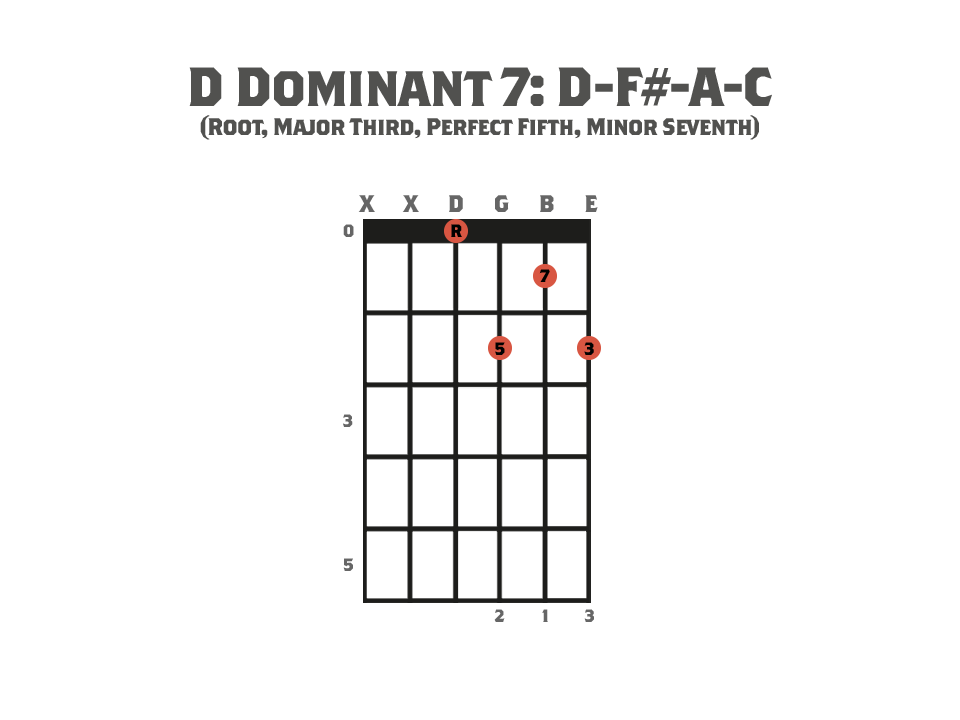
Bar 2
The accented notes in this bar are A, A and C. Here an A minor (A-C-E or A minor 7 (A-C-E-G) could work well. I’ve gone for Am7.
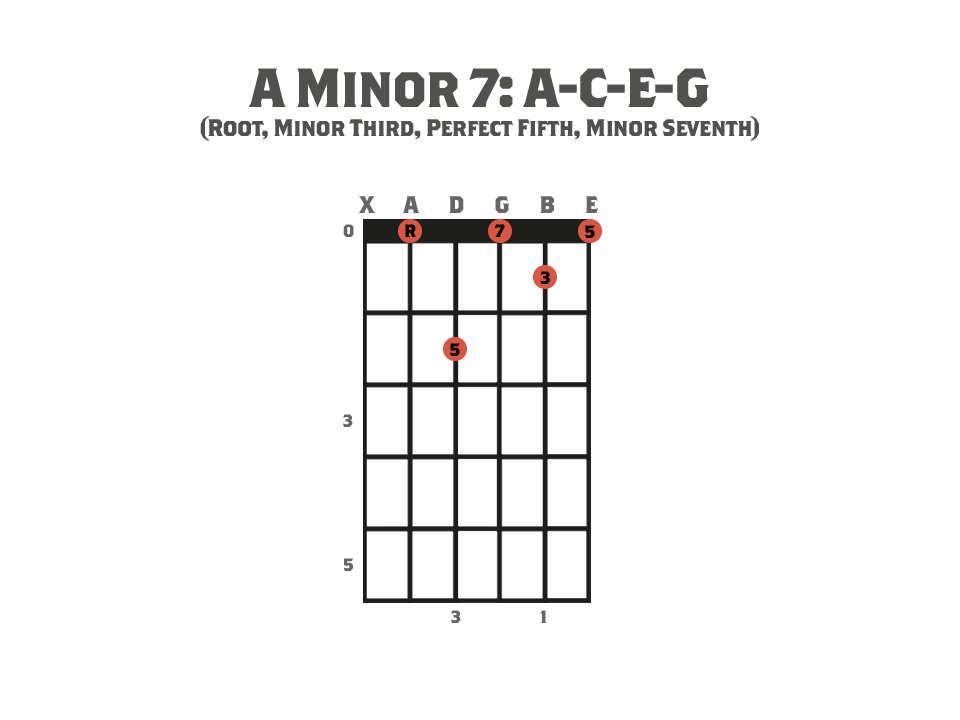
Bar 3
The accented notes in this bar are E, E and G. This time let’s spice things up slightly by trying a 9 chord.
E and G fit in an Em chord so let’s try Em9 (E-G-B-D-F#). I’m taking my pinky finger off the high E string the second time I strum the chord which makes an Em7.
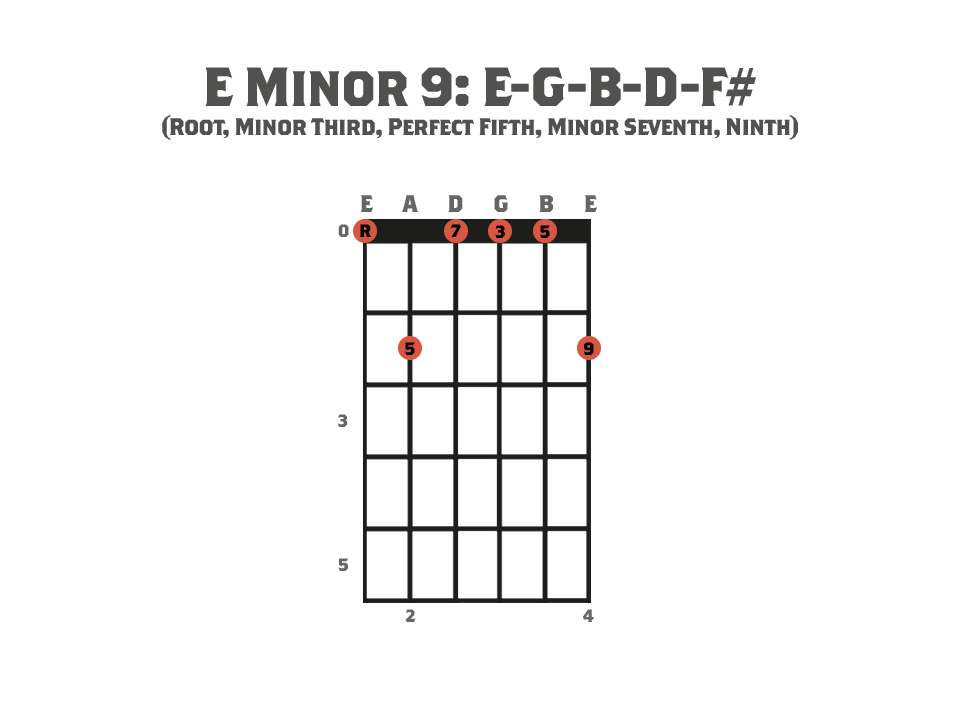
Bar 4
The accented notes in this bar are B, B and D. As before The first two accented notes will be our root note and the last one will be our third. In this case it would give us a Bm. Here I’m going to play Bm7 and then on the 4 beat I’m changing the voicing slightly by adding the 7th on the top of the chord (As well as in the middle), on the 5th fret E string.
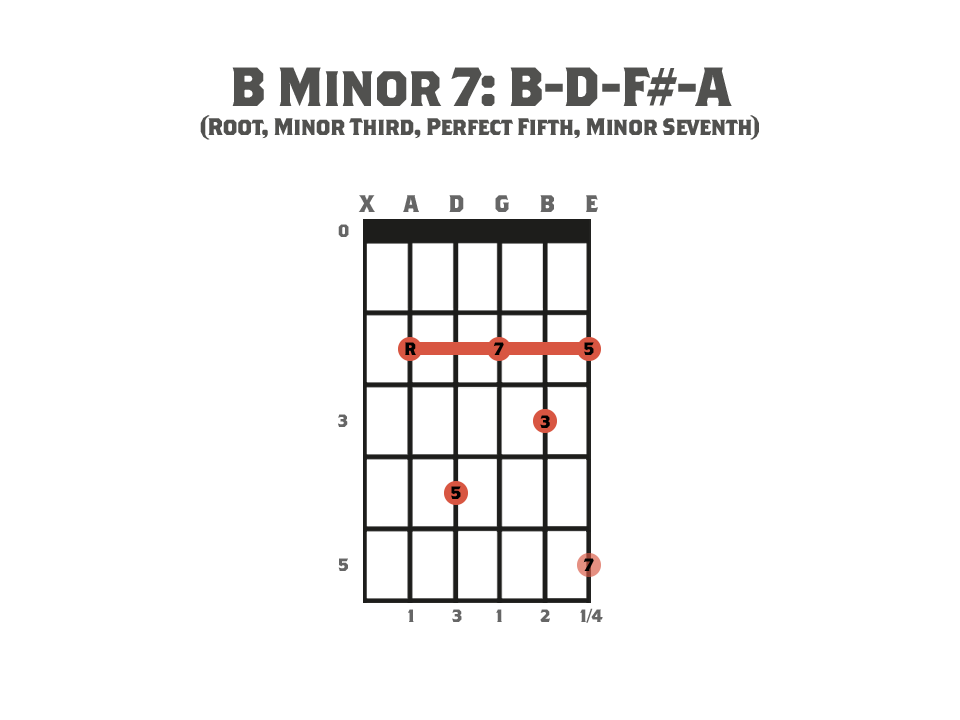
Bar 5
The accented notes in this bar are F#, F# and A. This would fit with an F#diminished chord or F#m7b5 (sometimes called “half diminished”). Since this is quite a dissonant chord and the notes are F#-A-C-E I’m going to move to Am on the 4 beat (A-C-E).
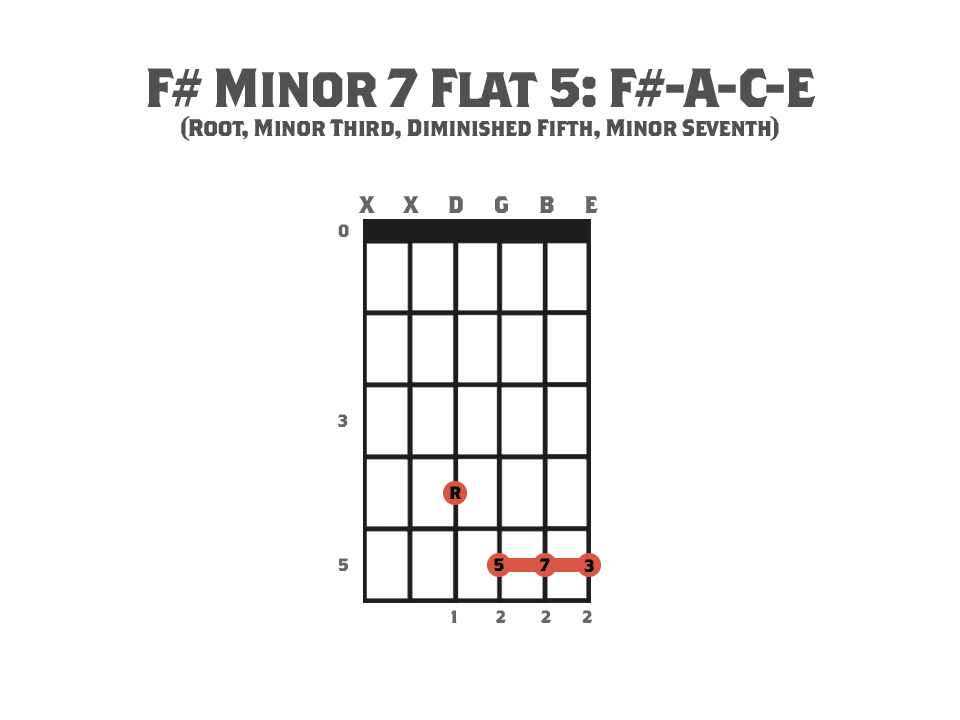
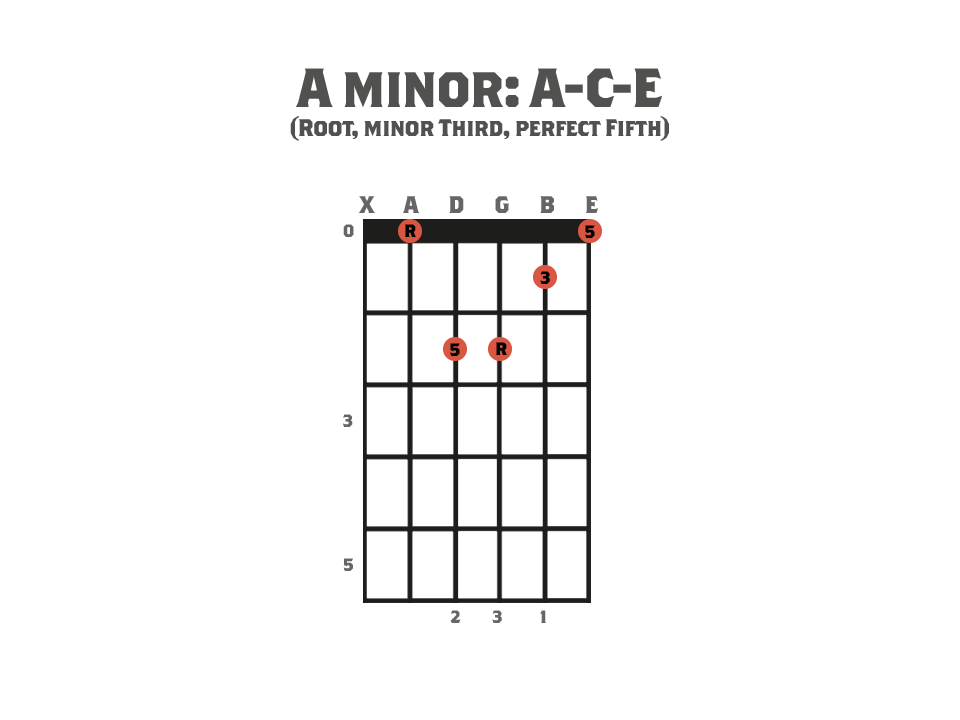
Bar 6
In the final bar I’m accenting different notes, The 1 and 2 beats and the ‘a’ of 2 and the ‘a’ of 3 plus the ‘and’ of 4 (&) . So we’re going (accents in bold):
1 e & a 2 e & a 3 e & a 4 e &
The accented notes are C, C, D, D and A. This time I’ll take a different approach, since we said the lead part is in B Phrygian we want to try and resolve our chord progression to Bm. You don’t have to but it will emphasize the B that we’re bending up to in the lead part.
I ended up ignoring the accented notes this time and thinking about ways to resolve to Bm using chords from our key of G Major. In the end I liked the way Em – Am – Bm sounded but it was slightly bland so I changed the Am to an Asus4 (A-D-E) which shares the note D with Bm (B-D-F#).
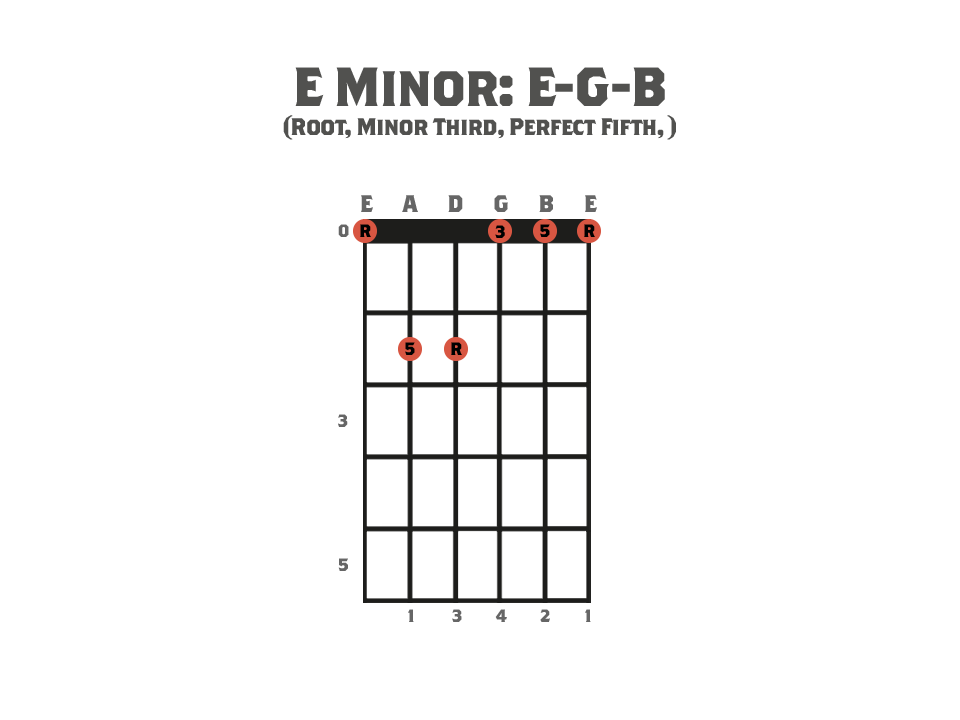
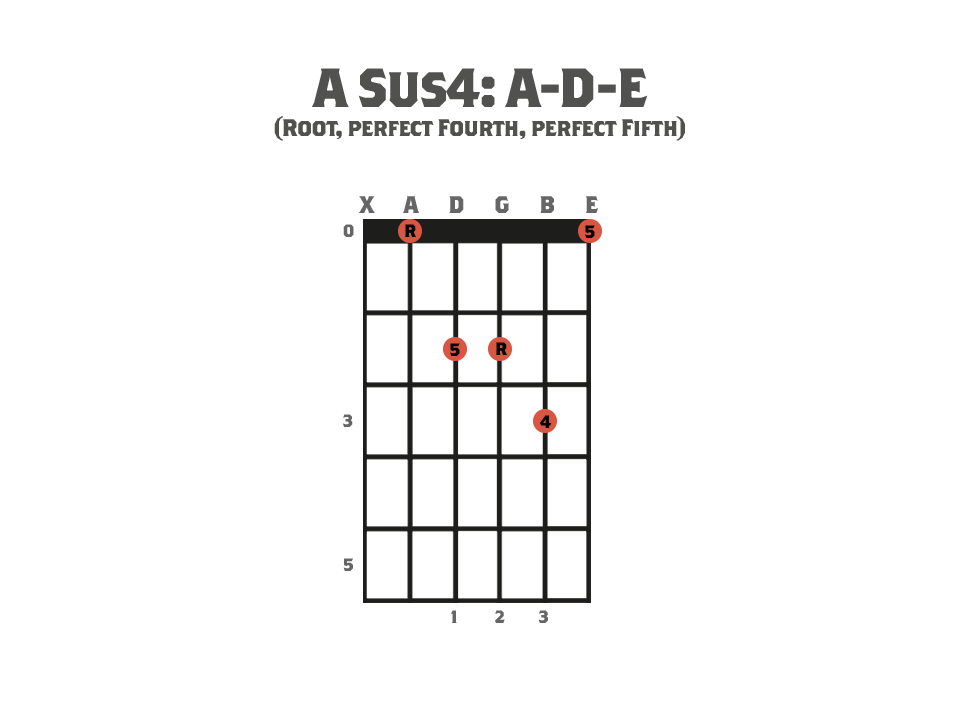

Clean Lead and Chords
Here’s what it all sounds like when put together:
A Heavier Approach:
Since I mostly write Metal I would like to have some distortion on the guitars. This will work just fine for the lead part but our extended chords will likely sound muddy with too much gain.
There are many different ways to approach this but a few options we could take are:
1. split the chord across two guitars as per this post.
2. Play the chord as an Arpeggio or break it down into a riff
3. Have the rhythm guitar play a heavy riff and have the chord played by a keyboard or synth.
Since we’ve looked at splitting chords between two guitars previously let’s focus on options 2 and 3 for today.
Creating Short Riffs From the Chords
Here I’m using the notes of each chord but playing each note individually with palm muting.
I’m using an 8 string guitar for this however if you are following along with a 6 or 7 string then you can move some of the lower parts up an octave.
The chords I’m outlining are the same as the clean chords we used in the first example, except in the final bar. After playing the notes of F# diminished in Bar 5 I felt like the riff wanted to move to a G5 power chord in bar 6, however to avoid sounding like a resolution to G5 I then moved back to F#b5 and then played notes ascending F#, G, A and then playing the B in a lower octave as a power chord on the Low B String (7 string). You could ascend to B on the 7th fret E string here if you are playing a 6 string guitar.

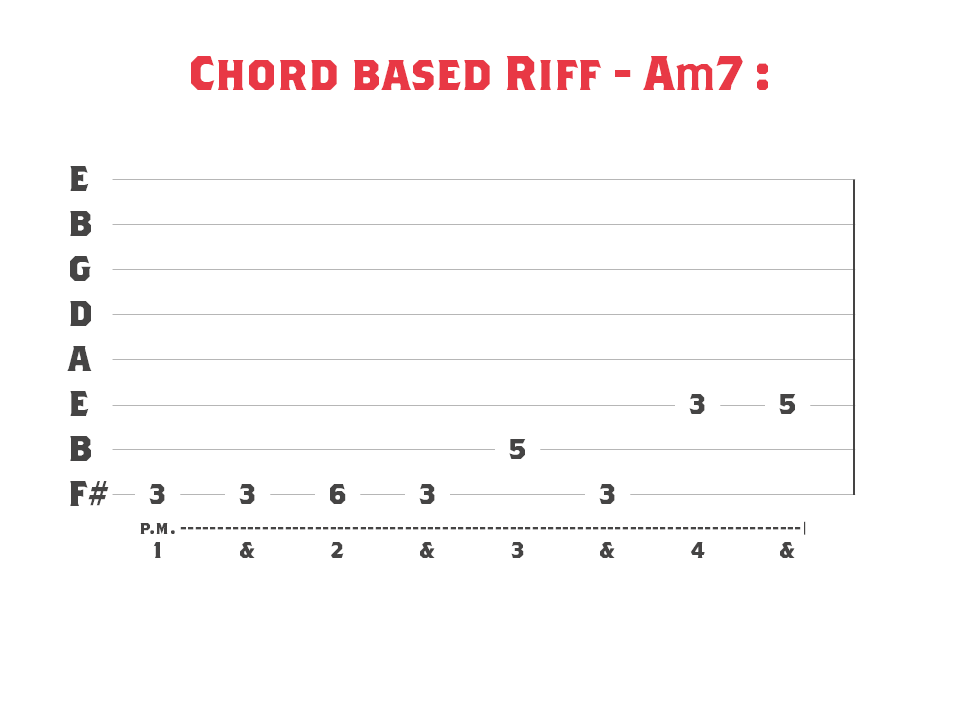
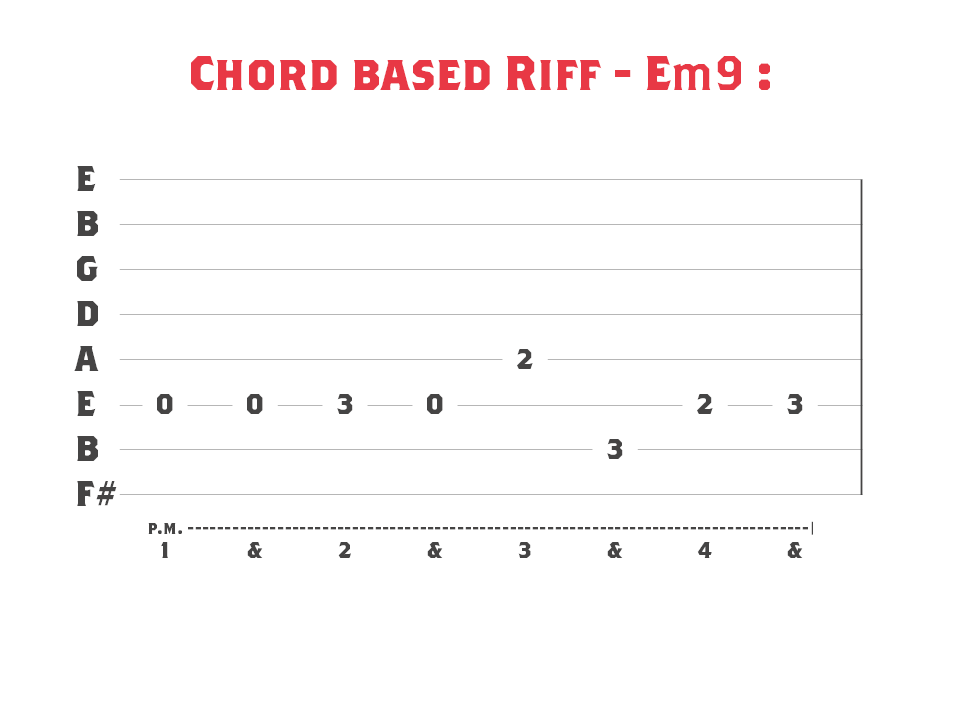

I’ve kept the rhythm fairly simple here so as not to take attention away from the lead guitar. We’re using mostly palm muted 8th notes. In Bar 4 I am playing the last two notes without the palm mutes, this helps to break things up a bit and also highlights the change in format in the 5th bar where I’m arpeggiating an F# diminished triad.
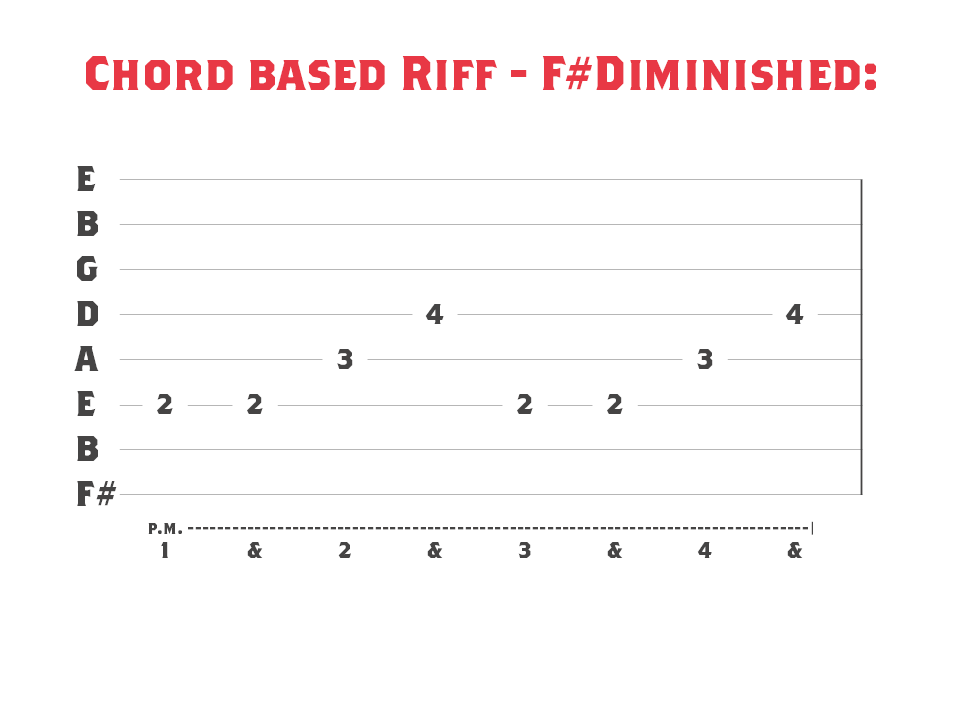
Then there are a couple of 16th notes in Bar 6 to add a little interest. I am ending by simply holding the B power chord.
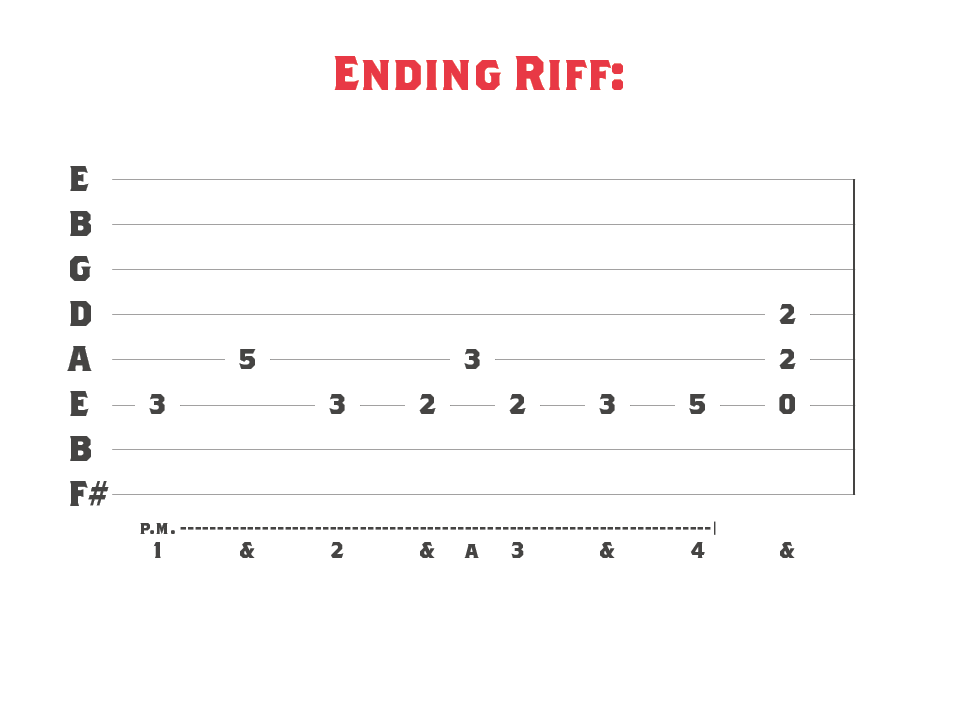
Using The Mode to Create A Heavy Riff
Our last example broke down the chords into riffs, however sometimes to create a heavier feel you want to keep things simple and not have too much movement going on. In this last example I have written a riff using our B Phrygian mode.
Basically I am starting with the B on the 5th fret of my low F# string. You could also play this an octave higher at the 7th fret E string. Then I am going up to B an octave higher and descending back down to the note C. This will emphasise the flat 2nd degree of the B Phrygian mode which is quite a dark tone so it works well in a “heavy” context.
The riff is one bar long and I am repeating it for the first 5 bars. Bars 1, 3 and 5 the C is played twice at the end as 8th notes. In bars 2 and 4 it is played once and held for a quarter note.
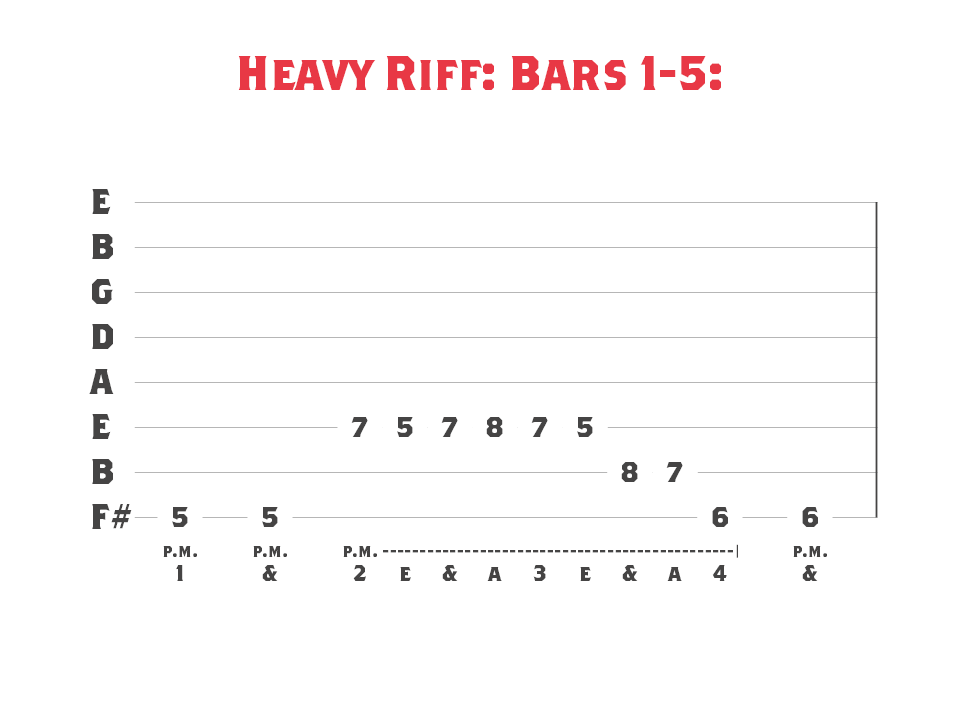
In Bar 6 I am altering the second half of the riff to alternate between F# and C (both notes from F# diminished). Then playing an E power chord then both guitars play a B power chord to end in the 7th bar.
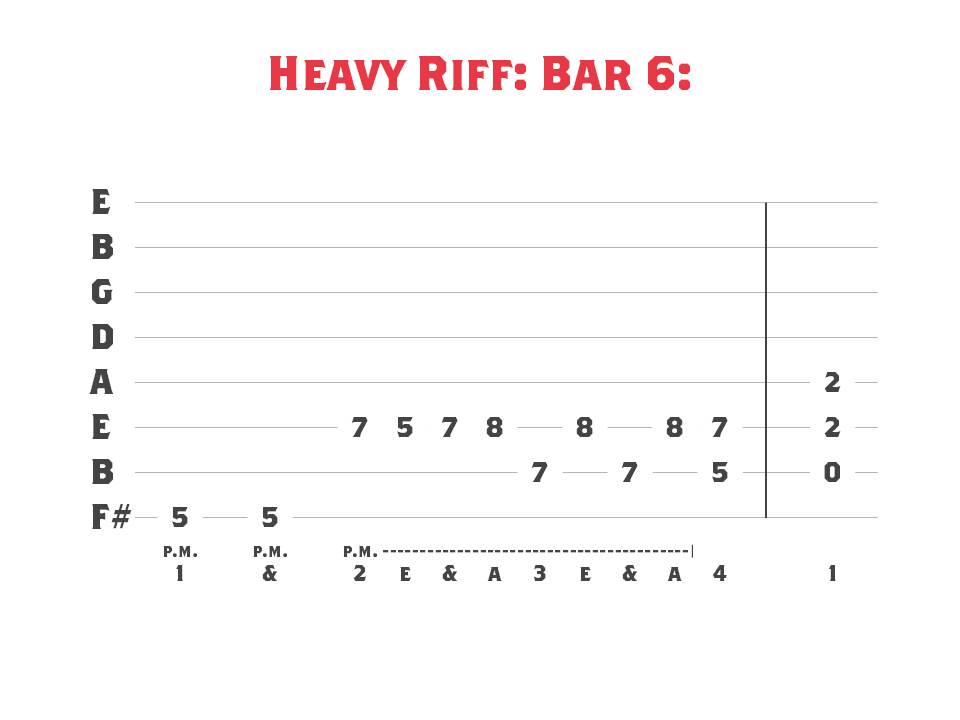
Bonus Round! Harmonizing the lead
Let’s finish off by creating a little harmonized part and then leading in to the next section of the song. I’m going to use the last two bars of the lead however I am changing the ending by adding in a 3 string sweep of an F# diminished triad.
Next I’m going to match this with the Rhythm guitar. We’re going to create dissonance by having the second guitar play everything 1 fret (a semitone) lower. This gives us a melancholic kind of feel. At the very end of this lick the second guitar slides up to fret 22. This is a 5th above the note played by the first guitar.
After that we’ll go into a new rhythm section which both guitars will play. Going from dissonance to a nice tight rhythm will make this change feel quite powerful and “Chunky”.
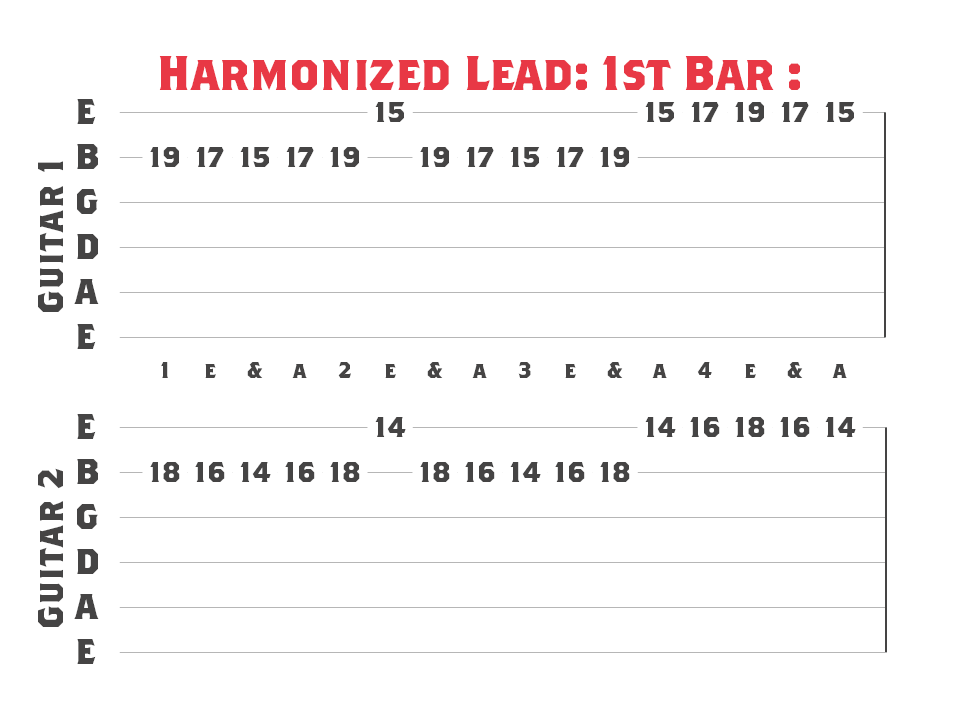
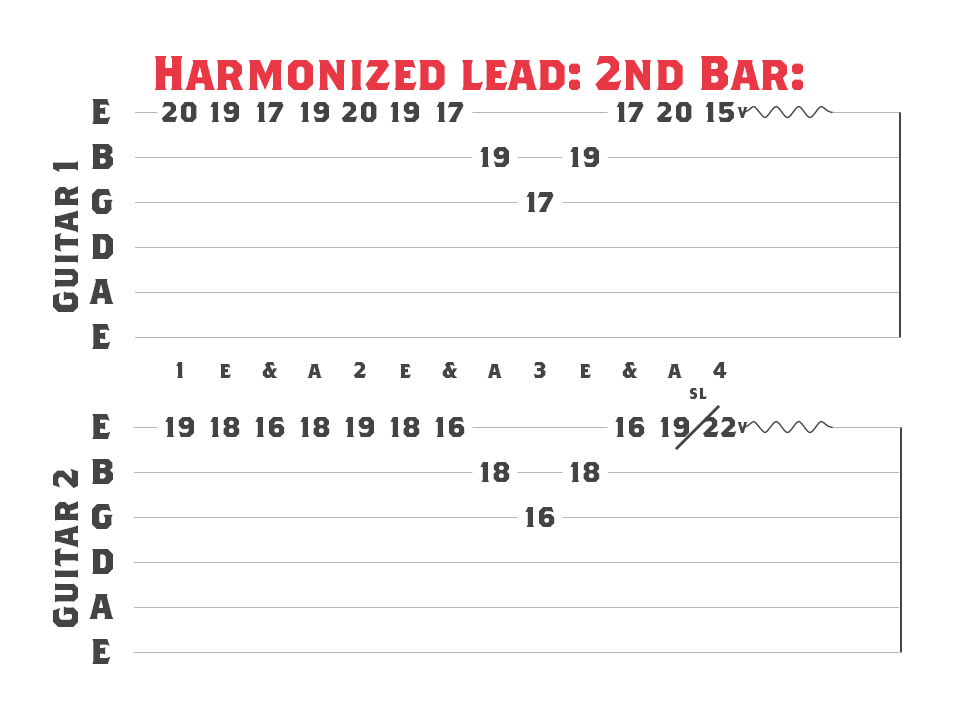
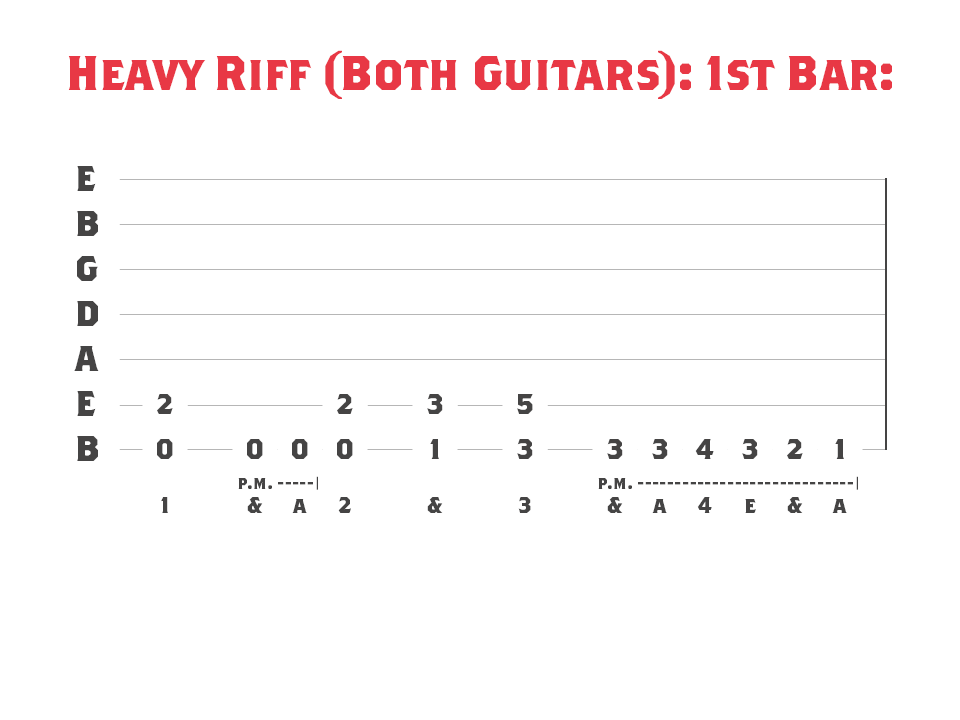
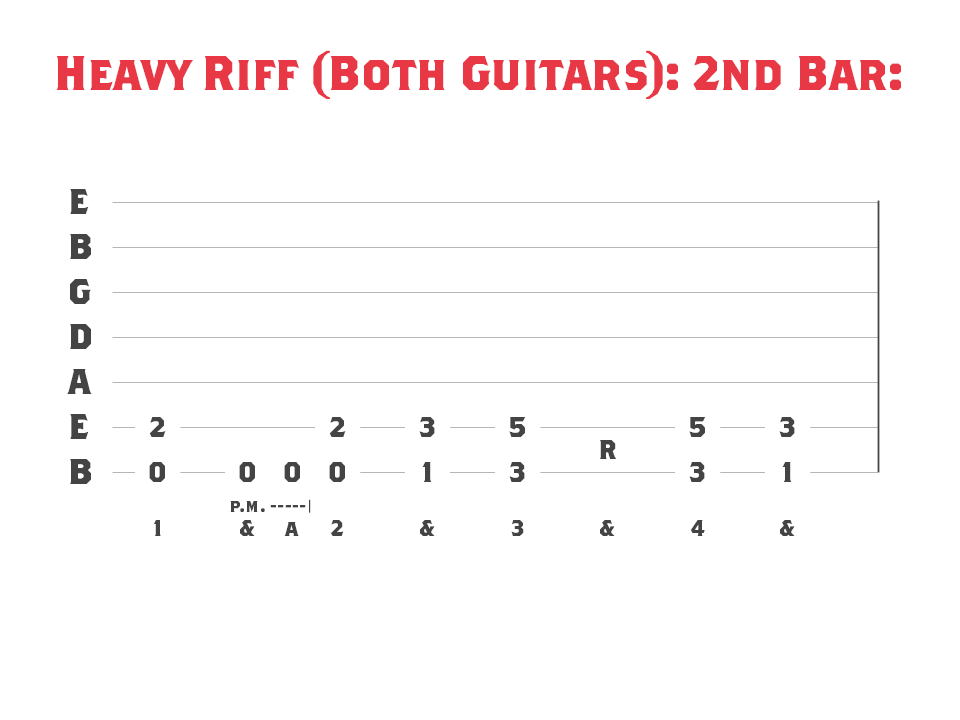
Footnote: The Guitar used in the cover image is the RC-One signature guitar from Ormsby Guitars. Made for Rusty Cooley.

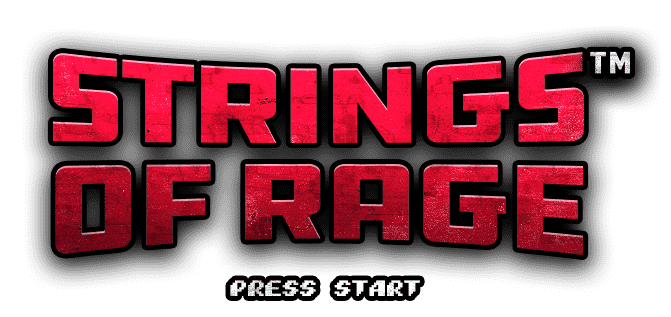
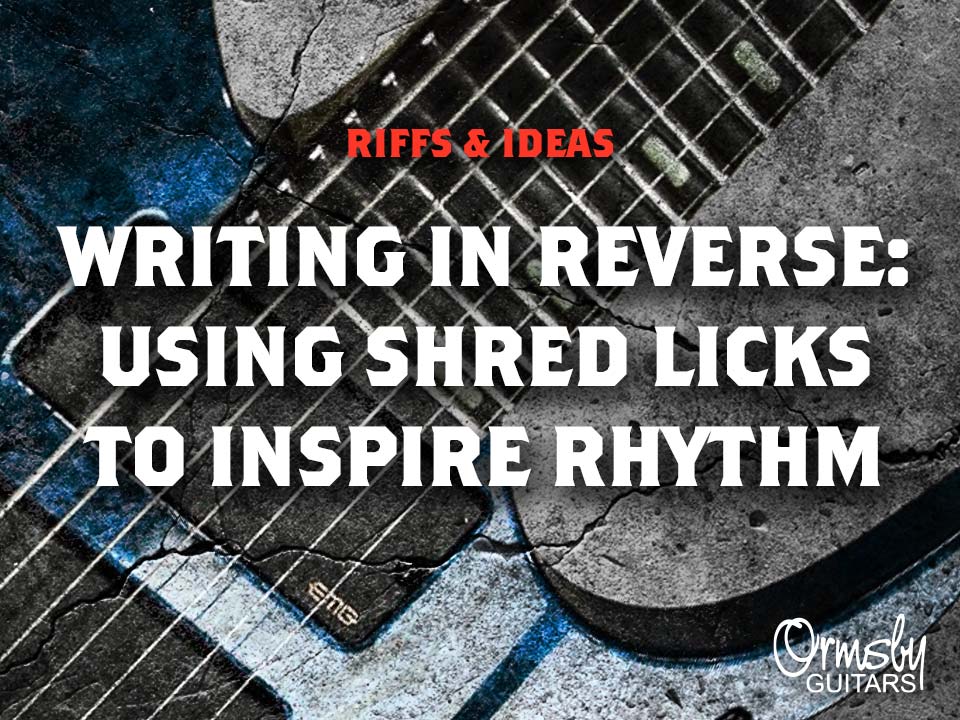
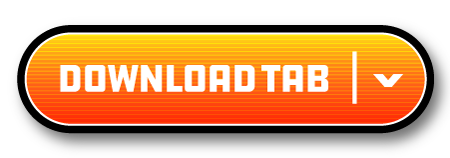
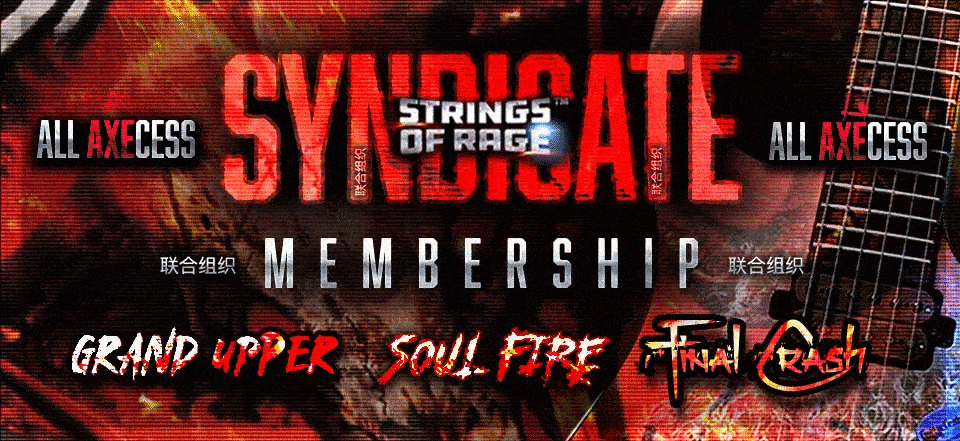
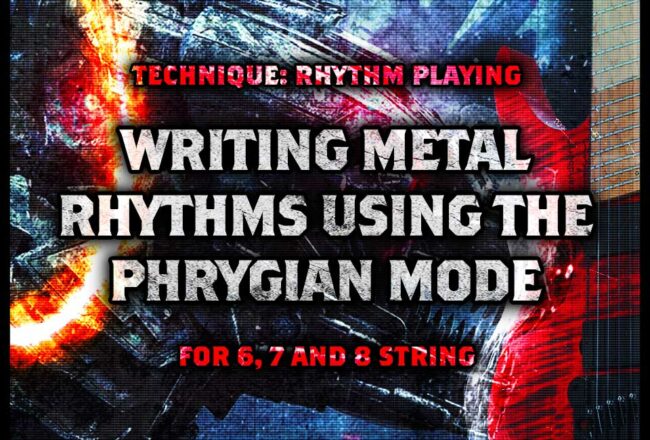
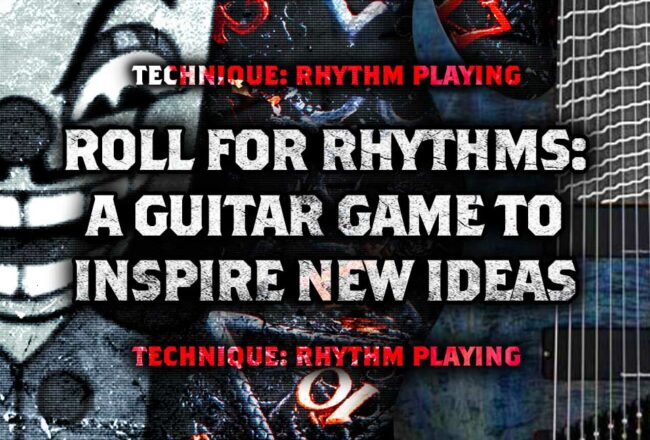
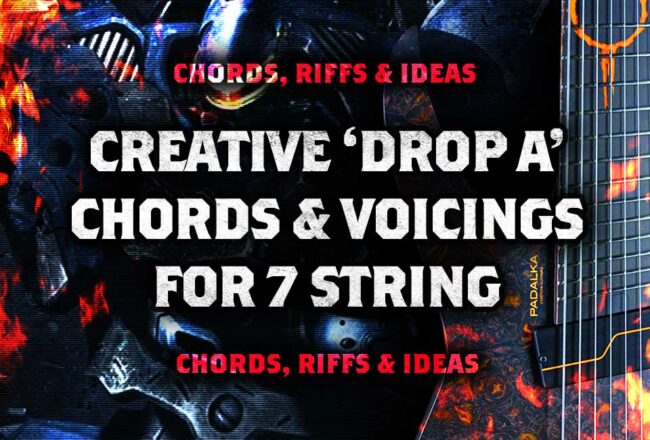
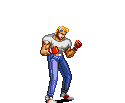


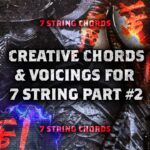


No Comment